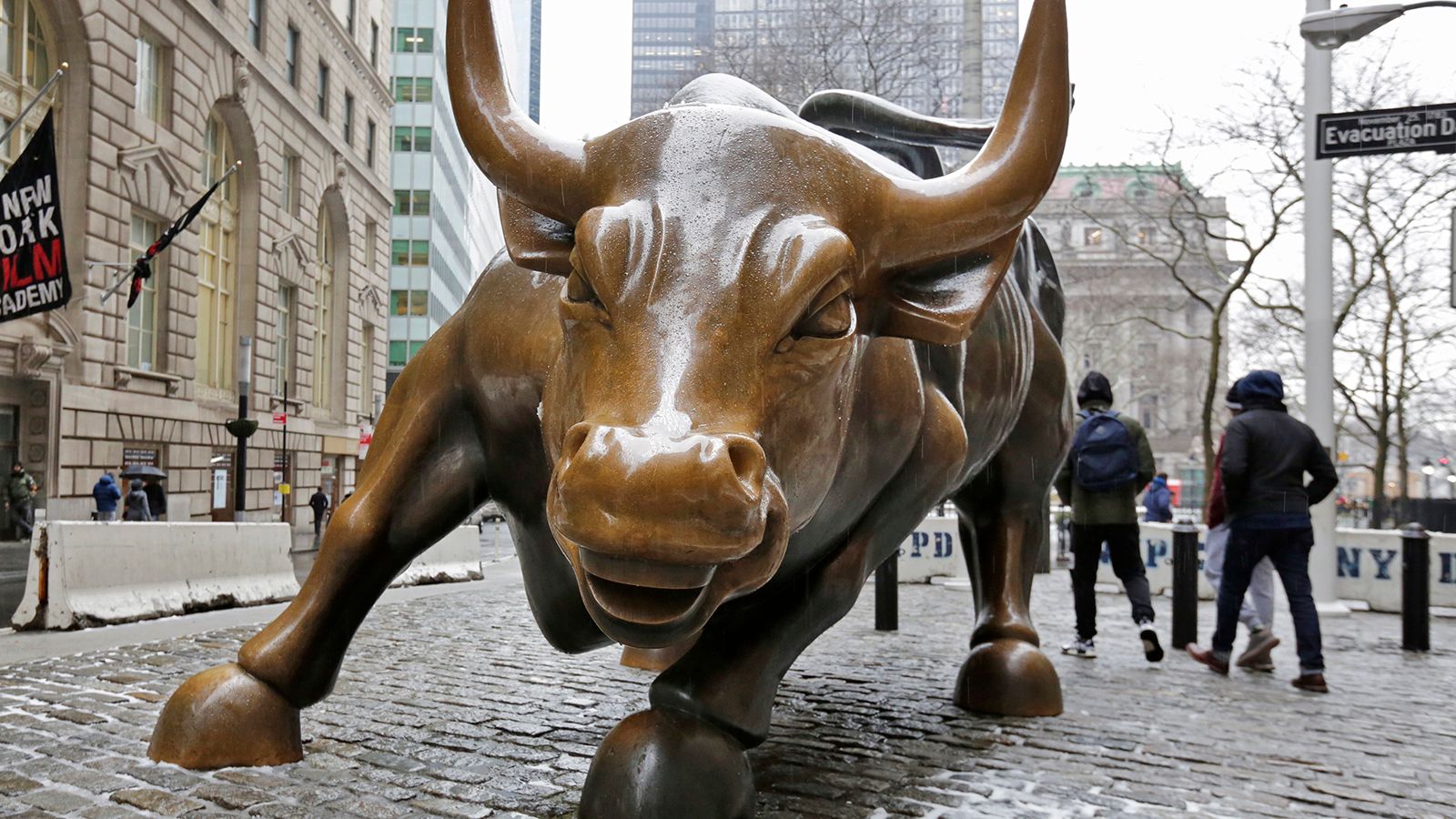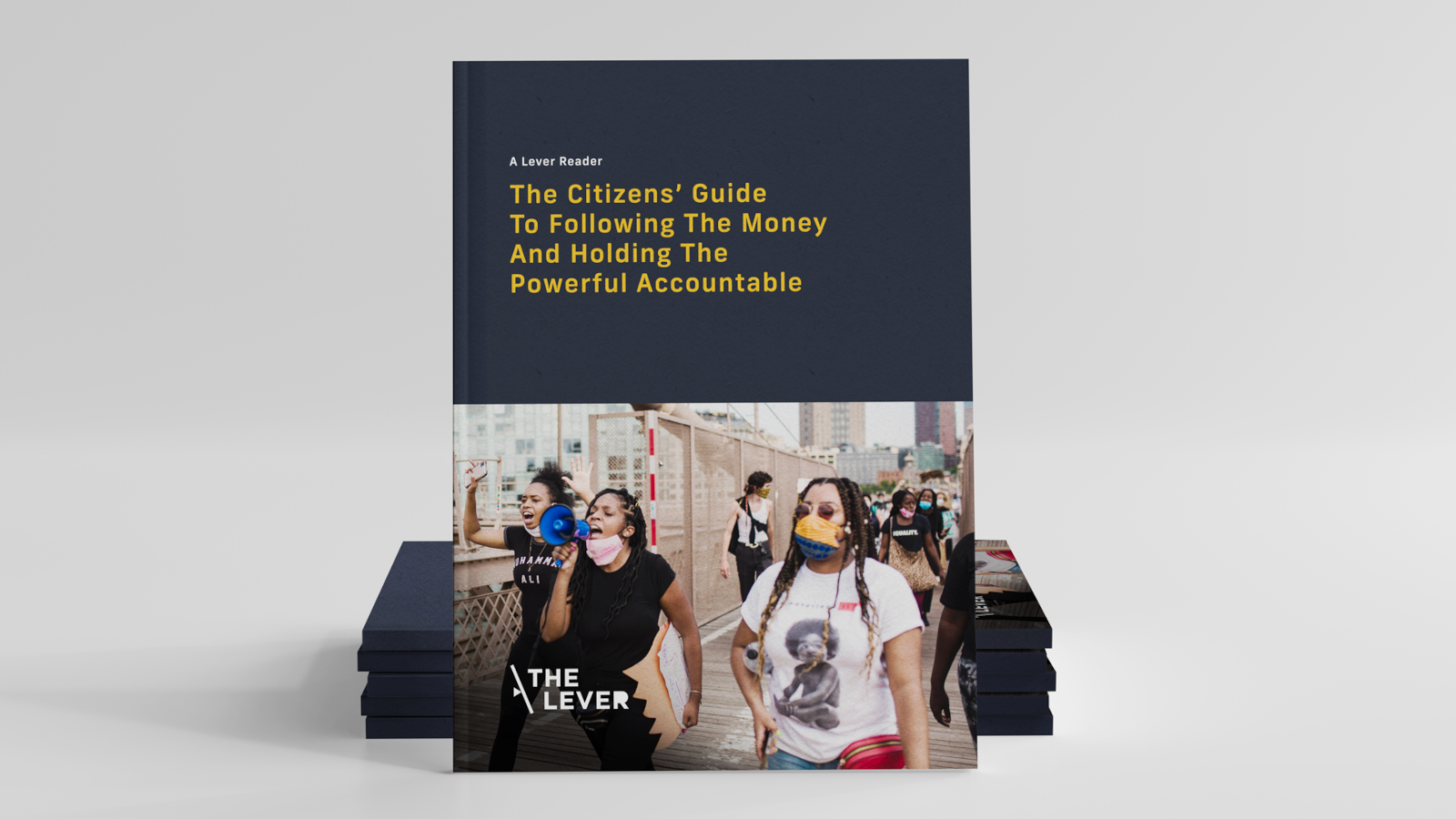|
Today we bring you an exclusive from The Lever’s Rebecca Burns related to the ongoing banking crisis. Two months ago, San Francisco-based First Republic Bank pressured regulators not to adopt new rules to minimize the risk of government bailouts for insolvent banks. Now, they appear to be headed for collapse. Read more below. Also: - LISTEN: This week on the Lever Time pod, we spoke with Cornell Law School Professor Saule Omarova and Matt Stoller, an analyst and researcher who writes frequently about financial regulation, and asked them what can be done to prevent these kinds of banking emergencies from happening. The premium segment for paid supporters delves into the question: Should Biden fire Jerome Powell? Click here to listen now.
As a reader-supported investigative news organization, The Lever relies on readers like you becoming paid supporting subscribers. Please consider taking this step today and be part of holding the powerful accountable. Rock the boat.
 The Charging Bull sculpture in New York's Financial District. (AP Photo/Richard Drew) By Rebecca Burns [View in browser] After bailing out Silicon Valley Bank last week, the federal government is reportedly considering the rescue of a second struggling institution whose deposits are largely uninsured. But just two months ago, that bank, San Francisco-based First Republic, pressured regulators not to adopt new rules to minimize the risk of government bailouts for insolvent banks, calling such enhanced regulation “unnecessary.” First Republic Bank is best-known for its role at the center of a major Donald Trump scandal. Its board of directors includes major Trump donor and ally Tom Barrack, who is reportedly spearheading efforts to save the company. Only months before the rescue talk began, the bank waged a battle to deter federal banking regulators from considering stronger measures to prepare for the potential failures of regional banks like First Republic. Under laws passed after the 2008 financial crisis, large banks are already required to show that, if they fail, the process of shutting them down will not imperil the broader financial system or rely on taxpayer money. 💡 Follow us on Apple News and Google News to make sure you see our stories first, and to help make sure others see our breaking news as well. A 2018 regulatory rollback reduced many requirements on regional banks, including that they draw up annual plans, known as “living wills,” to safely wind down failing banks. But as those banks rapidly ballooned in size, federal regulators solicited public comment last fall on whether additional precautions were needed to limit the risk of financial contagion in the event of “uninsured depositors suffering loss” at one bank. That is the very prospect now facing customers of First Republic, about two-thirds of whose deposits are uninsured because they surpass the $250,000 guaranteed by the federal government. The proposal drew predictable opposition from bank lobbying groups, but First Republic CEO Michael Roffler also weighed in personally, saying the measures were “unnecessary” for banks without complex corporate structures, including First Republic. Existing regulations, which require the bank to submit a so-called resolution plan for its insolvency every three years, were sufficient, he argued. “In the unlikely event of insolvency of the bank, the resolution process should be straightforward,” wrote Roffler in January, arguing that his bank should not be required to hold additional capital or issue additional “loss-absorbing” unsecured long-term debt, one of the measures under consideration by regulators to add to banks’ financial cushion in times of crisis. Now, less than two months later, First Republic is on the brink of insolvency and struggling to raise emergency capital following some $70 billion in depositor withdrawals in recent weeks. The bank staved off collapse this month with an unprecedented $30 billion emergency infusion from other banks, but still faces a hole in its books. Industry leaders and federal officials are now discussing the possibility of government backing for a rescue deal, according to Bloomberg News. First Republic Bank declined The Lever’s request for comment. A spokesperson for the Federal Deposit Insurance Corporation (FDIC), one of the two agencies considering the enhanced resolution requirements, said it does not discuss open and operating institutions. A spokesperson for the other agency, the Federal Reserve, declined to comment. “Trigger-Prone” DepositorsFirst Republic Bank’s financial woes are similar, though not identical, to those of Silicon Valley Bank (SVB). Both institutions held long-term assets hit hard by the Federal Reserve’s recent interest rate hikes, and both had large numbers of uninsured depositors — two key risk factors that put nearly 190 other banks at risk of the same fate as SVB, according to a recent academic study. First Republic and SVB also share a Silicon Valley pedigree. While SVB was the go-to banker and lender for start-up businesses, First Republic found its niche among well-heeled individuals in tech, operating a branch inside Facebook’s Menlo Park headquarters and giving CEO Mark Zuckerberg a $6 million mortgage-loan at an interest rate of 1.05 percent.  | Learn All Our Investigative Tricks |  | Score a copy of our Citizens’ Guide to Following the Money and Holding the Powerful Accountable, free with a paid subscription. The e-book gives you all the tools and tricks our reporting team uses to scrutinize power. | |
While First Republic built a loyal following among some of its clientele — the founder of a male fertility-focused start-up called AlphaSperm told the San Francisco Chronicle that he planned to weather the storm — its elite customer base also posed a special risk. “These depositors are particularly trigger-prone,” Boston College law professor Patricia McCoy told CNN of the bank run on First Republic that began in the wake of SVB’s collapse, which was itself precipitated by a rapid exodus of venture capitalists like Peter Thiel. “They’re sophisticated, they know they have other options, and they have mechanisms in place to move money quickly.” SVB both lent heavily to and invested directly in venture capital funds. While these activities made up less of First Republic’s business, the bank has $10 billion of such loans on its books. First Republic is using nearly all of its deposits to fund its lending activities, according to Morningstar, increasing the risk that it could run out of cash to cover withdrawals. First Republic and SVB share another key commonality: They both had assets sitting just below the $250 billion threshold at which banks are subject to annual stress tests and other enhanced regulations. The 2010 Dodd-Frank financial reform law set that threshold at $50 billion, but a 2018 bipartisan deregulatory law raised it. SVB CEO Greg Becker personally pressed Congress to reduce scrutiny of regional banks like his own, as The Lever reported earlier this month. “Before They Fail”In the wake of the 2018 law and the subsequent relaxation of oversight by the Federal Reserve, both First Republic and SVB grew rapidly, part of a new wave of consolidation in the banking sector. With advocates raising the alarm that mergers and rapid growth among regional banks now posed risks to the financial system, banking regulators in Joe Biden’s administration suggested last year that they would consider increasing oversight. In October, the Federal Reserve and the FDIC issued a rulemaking notice seeking public input on whether some of the stringent requirements used to shield the financial system from the failure of so-called “global systemically important banks” should also be applied to so-called midsize banks that have, in fact, grown quite large. Stronger safeguards may be especially important, the agencies noted, given that “some large banking organizations have increased their reliance on large uninsured deposits to fund their operations over the past decade.” While the largest banks also had high levels of uninsured deposits, existing regulations require them to submit annual living wills, and to maintain a larger financial cushion. Financial reform groups said they support improved precautionary measures. But they took issue with the specific measure being contemplated by the Federal Reserve and the FDIC: requiring large banks to issue forms of long-term debt that could be converted to equity in the event of failure, thereby forcing investors to take losses but sparing taxpayers. The group Better Markets commented that this approach was itself risky, and urged higher capital requirements on large banks as well as stronger stress testing by the Federal Reserve. “The agencies’ primary focus should be on strengthening the financial resilience of these giant banks before they fail so they don’t fail,” wrote President Dennis Kelleher. Bank lobbying groups, including the American Bankers’ Association and the Bank Policy Institute, opposed new measures. One of just a handful of banks to weigh in individually, First Republic CEO Roffler wrote that large banks like his should not be subject to enhanced capital, long-term debt, “or any other additional resolution requirements proposed” by the agencies, “because their operations do not pose the same, if any, financial stability risk or present complex resolvability issues” as the largest banks subject to the enhanced requirements. Roffler added that, should the bank ever fail, “the FDIC would take and control the entire organization as receiver, without involvement of a bankruptcy court or foreign courts and receivers.” The public comment period closed in January. The Federal Reserve and the FDIC have not issued any further rulemaking notices on the subject. Bart Naylor, a financial policy advocate at the group Public Citizen, told The Lever that federal regulators should force banks to fund their activities with more shareholder capital. The largest banks already finance their assets with more than 94 percent debt, Naylor noted in a comment to regulators. Without such reforms, the problem of “Too Big To Fail” persists with banks like First Republic, Naylor said. “Right now, on the table are a whole bunch of bad options.”
Help us spread the word! Please forward this email to family and friends. Was this email forwarded to you? Sign up for free to receive original reporting like this in your inbox every day.
|



